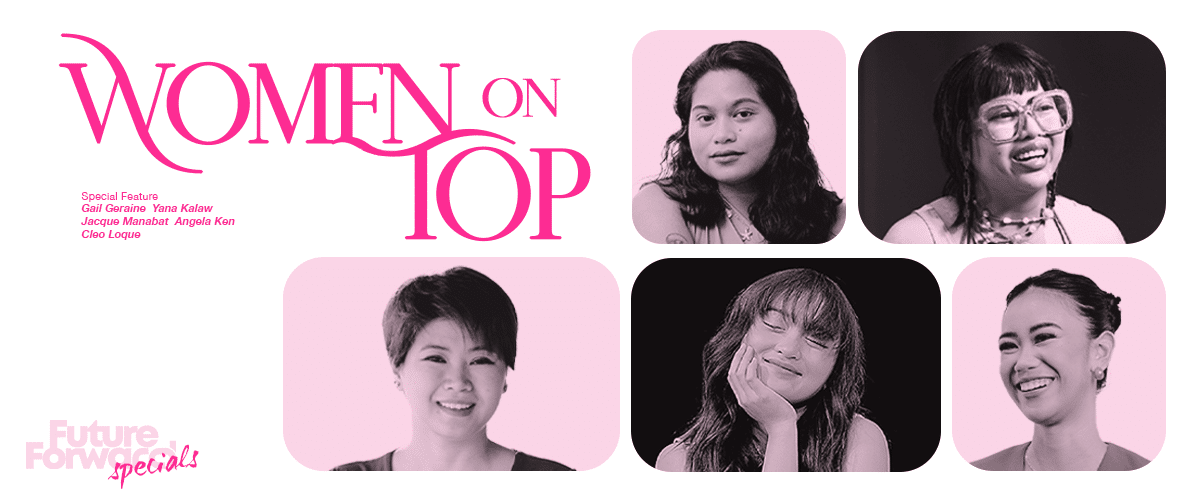MANY decades ago, history was only written for victorious men, depriving women of the space and opportunity to get recognized and equally revered.
It would take decades of struggle and resistance for women to finally have the right to vote, to run for public office, to enter male-dominated jobs, and to get out of the ‘domestic sphere’ (households).
Today, this centuries-old struggle has persevered and is carried on by the new generation of optimistic and undaunted women.
In celebration of National Women’s Month this March, republicasia puts a spotlight on five women from various fields who have never been afraid to speak up and reclaim their spaces in society.
They are women of courage and determination, breaking through social barriers and gendered stereotypes.
And they all have one dream in common—for the next generation of girls to have a better life free from discrimination and patriarchal violence.
A woman of truth for almost two decades
In 2023, Paris-based media watchdog Reporters Without Borders (RSF) released a report labeling the Philippines as still “one of the world’s deadliest countries for journalists.”
This was despite the country ranking higher than the previous year in the 2023 World Press Freedom Index. Even United Nations Special Rapporteur on Freedom of Expression and Opinion Irene Khan described the ongoing media killings as the “most egregious form of censorship.”
If being a journalist in the Philippines is already a dangerous endeavor, how much more for a woman journalist?
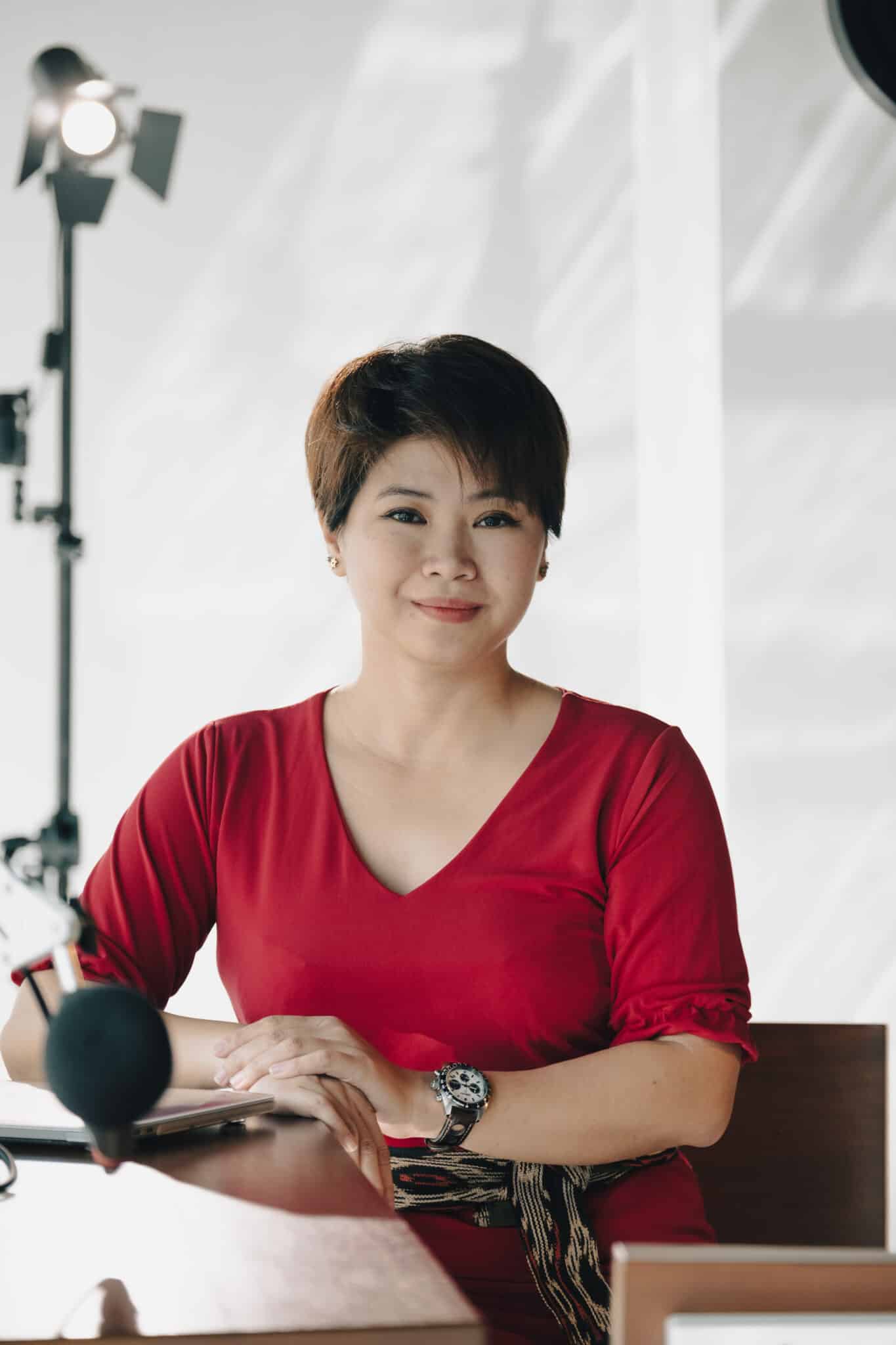
Renowned multimedia journalist Jacque Manabat was very well aware of these dangers when she entered the media industry right after she graduated from college in 2006.
Hailing from Baguio, journalism has always been her interest since childhood.
“It started when I was really young. Ang hawak ko e hindi coloring books, hindi ‘yung mga books for toddlers, ang hawak ko na e newspapers. I was reading alongside my lolo,” Manabat said.
At an early age, she already knew the power journalism holds—it could change the lives of many people by being well-informed.
Such an early realization would push Manabat to enter campus journalism, inspired by courageous journalists she read in newspapers and watched on television. But it was the esteemed journalist Korina Sanchez that left a remarkable impression on her.
“I was a big fan of ‘Hoy Gising’ na nagkakaroon ng change and it was Korina’s voice na naririnig ko na creating that change. And as a probinsyana like me at babae, I know that I will [also] have that courage tulad nila Korina to make a change,” she shared.
However, working in the media was not easy, especially if you are a woman from the province.
In her first year as a journalist in Baguio, a military man once told her that she would not last long in the industry for being ‘weak,’ simply because she was soft-spoken and petite.
This patriarchal perception of women as weak has been entrenched in society, attacking women journalists based on appearance, instead of the stories they produce. This is despite women having been leading most of the biggest newsrooms in Philippine media companies today.
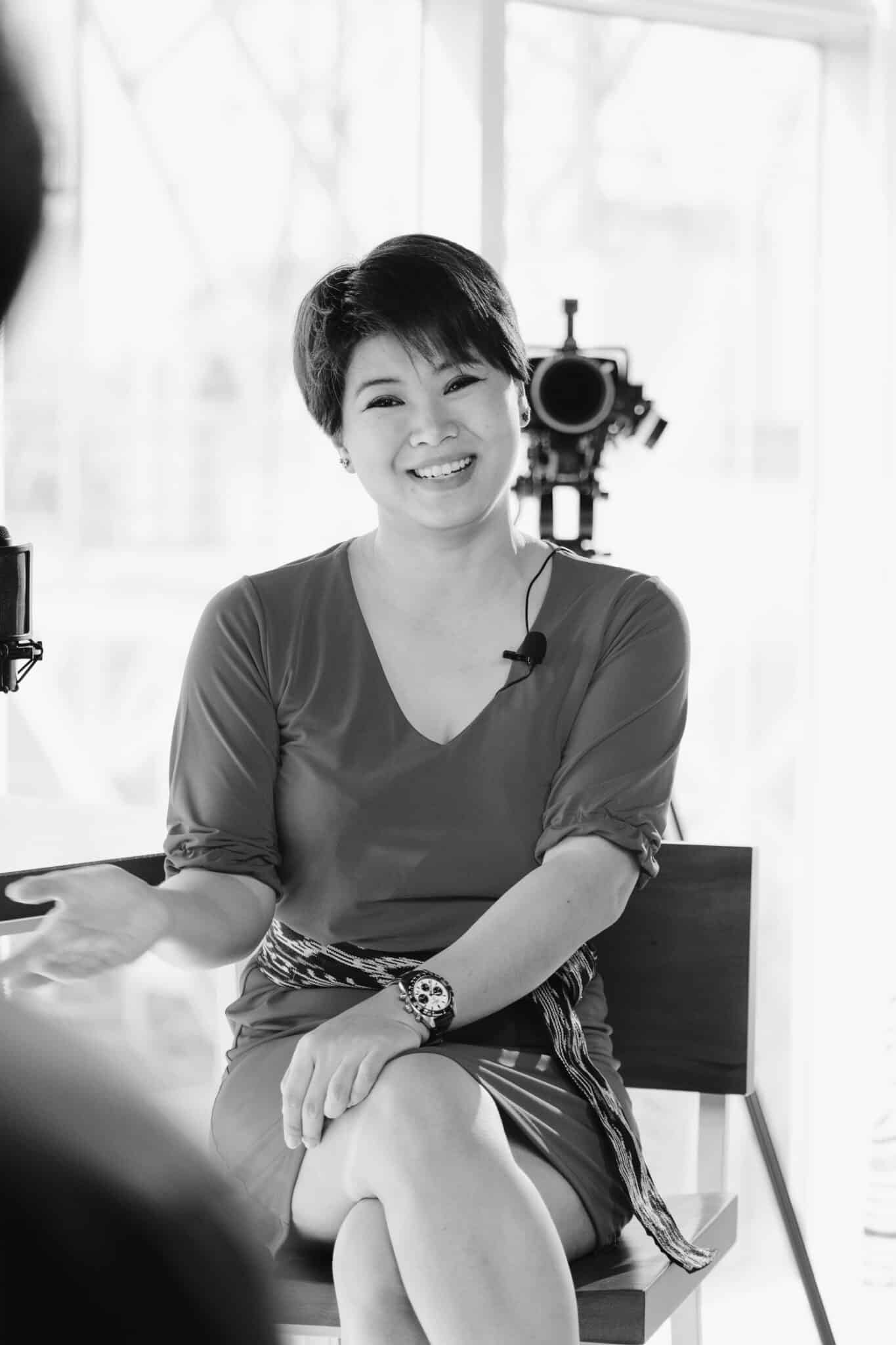
For Manabat, there are many barriers that women in journalism are facing that many of their male counterparts do not. For instance, gender stereotypes attached to news stories have been depriving women journalists of a lot of opportunities.
“Kapag sinabi mong disaster, sino una mong maiisip? Lalake ka agad. The West Philippine Sea? Lalake ka agad. Businesses? Lalake ka agad. Transportation, engineering? Lalake ka agad. I tried to break that barrier and I think I did,” Manabat shared.
Manabat was grateful to ABS-CBN, where she served as a news reporter, executive producer, and senior multiplatform journalist, for allowing her to break these barriers.

She produced numerous reports under the business beat, focusing on transportation and economic issues, topics that are often given to male journalists.
As a journalist for almost two decades, she also experienced receiving threats and intimidation for producing critical news. Thanks to the warm support of the community she has been serving for giving her the reason to remain in the industry.
She reminisced about the time when two women in a far-flung area in Catanduanes thanked her team through a letter for covering their place and putting their stories on screen. It was, for her, one of the best awards a journalist can ever receive.
“The best support that I got in my journey, yes, the newsroom was there, but it’s in the community that I was working with,” she said.
As one of the pioneers who utilize social media, particularly TikTok, to combat disinformation in the country, Manabat underscored the crucial role of journalists to go where the battle is.
“If you run away from it, then we are not doing our job. At a time of disinformation and media decline, we need to be where the audience is. And where are they? They are on TikTok,” she said.
Manabat has long been exploring the best ways to deliver news on various social media platforms. She believed that the message, no matter how good or factual, is useless if it does not reach the targeted audience.

As a woman journalist, she advised all aspiring journalists to never be afraid to take risks and always look back to the reason why they want to be a journalist.
She also urged all fellow women journalists to take up space and carve out doors of opportunities for other women journalists.
“When you carve that door of opportunity [for yourself], you open it to others as well. Hilahin niyo rin sila… When you uplift them, you uplift the community naman,” she shared.
Jacque Manabat is known for being adept at traditional and digital media journalism. She took up a Master of Journalism at Ateneo De Manila University and worked as an intern at Correctiv, a German nonprofit investigative journalism newsroom.
She was recently featured on Women of TikTok in-app billboard and Women on YouTube Breaking Barriers Online. She is also the first Filipino journalist to get verified on TikTok and the only Filipino journalist to participate in the first Global Creators’ Festival in South Korea.
Empowering women through photography
The creative industry, in general, and photography, in particular, has historically been dominated by men. Only in the past few years have women finally penetrated the industry and gained significant influence and attention.
The stereotypes towards women in creatives persist today despite the proliferation of liberal and feminist ideas among the young generation.
Gail Geriane, a woman photographer from Samar, aims to break these harmful prejudices by capturing all kinds of beauty, challenging the fragile, unrealistic beauty standards imposed on women.
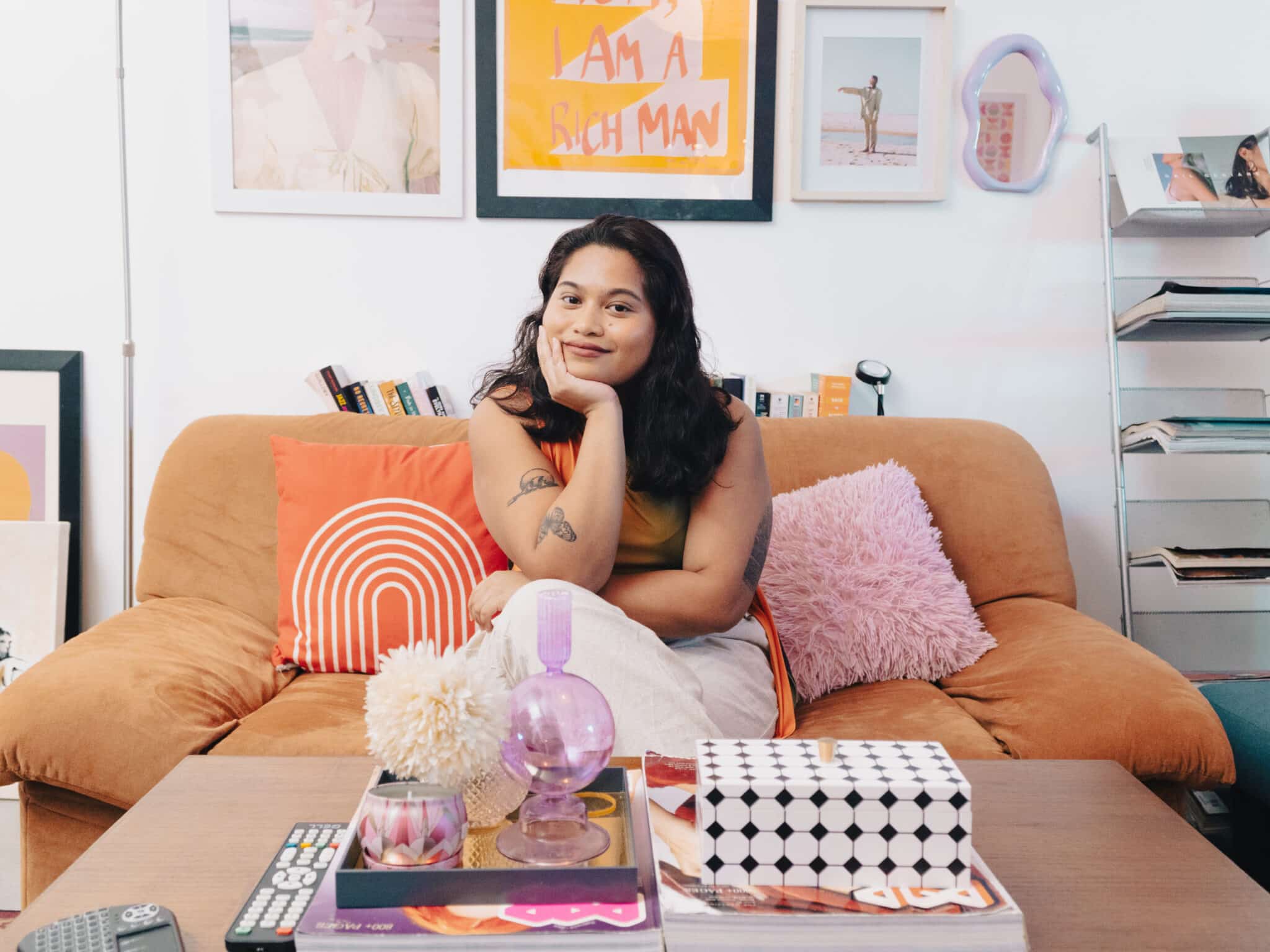
It was in 2008 when she began her liking for photography—all thanks to a known microblogging website called Tumblr.
The site helped her to discover ‘a whole world of fashion, photography, and all sorts of sub-cultural art forms.’
“I was so enamored by all the blogs I was following that I eventually decided to put up my own photography blog, just for fun,” she said.
Since then, Geriane put out all the stops to become the professional photographer that she is today. But getting there was never an easy task, especially if you are a probinsyana.
“Being a photographer in the province was both difficult and comfortable. Comfortable because I was in my safe zone [and] had my support system there. [But] the lack of resources and opportunity was [really] my biggest struggle in the province. Creatives from the province do not always get equal opportunities as compared to ones here [Manila],” she shared.
She even had to improvise with whatever resources she had back then in Samar just to accomplish her photography projects and commissions.
Despite the alluring comfort her hometown provides, Geriane decided to leave her comfortable life in Samar to develop her career.
“It was so hard for me to leave a stable career in Samar to pursue my dream here in Manila. I don’t have roots here and I barely know anyone from the industry. So it’s basically starting from scratch,” she said.
In her journey as a woman photographer, she had to constantly prove that she was competent enough to be taken seriously in the creative industry.
“I had to work harder to gain recognition and respect, especially when I was still starting. With the stereotypes that come with being a woman, I had to constantly prove myself that we are capable and worthy of being in the industry,” shared Geriane.
It was these harmful stereotypes that pushed her to incorporate women’s empowerment in her works. She believed that photography is more than just an art, as it is also a field for challenging the status quo of women in society.
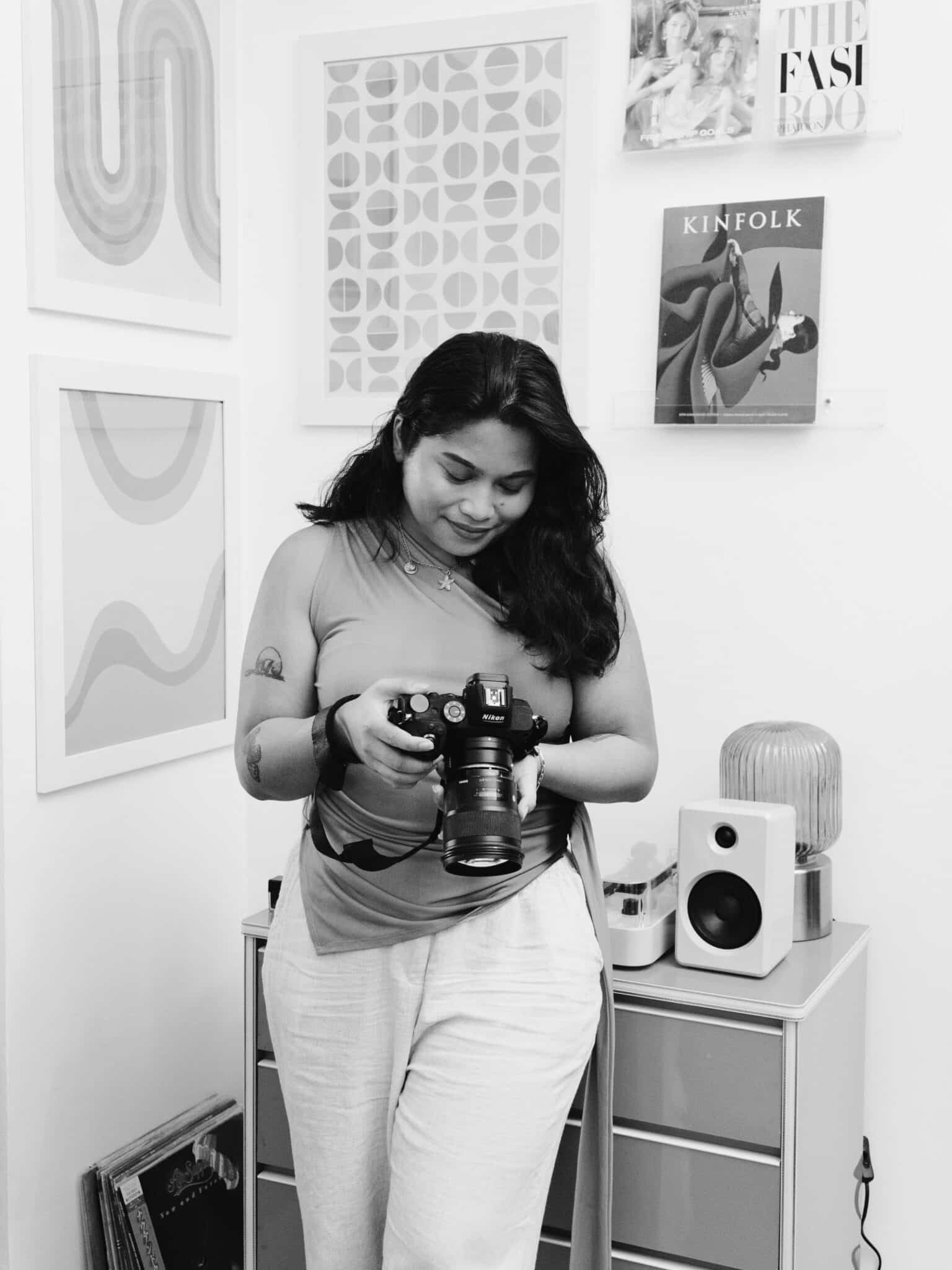
In most of her works, Gail seeks to challenge the patriarchal beauty standards in society by pointing her camera lens to all kinds of faces, showing the world that beauty could manifest in different forms.
“It is only right for me as an artist to direct my lens to underappreciated traits that we need to love more, mostly because that’s the kind of beauty I identify with. I’ve made it a mission to put the spotlight on local women in my photos,” she said.
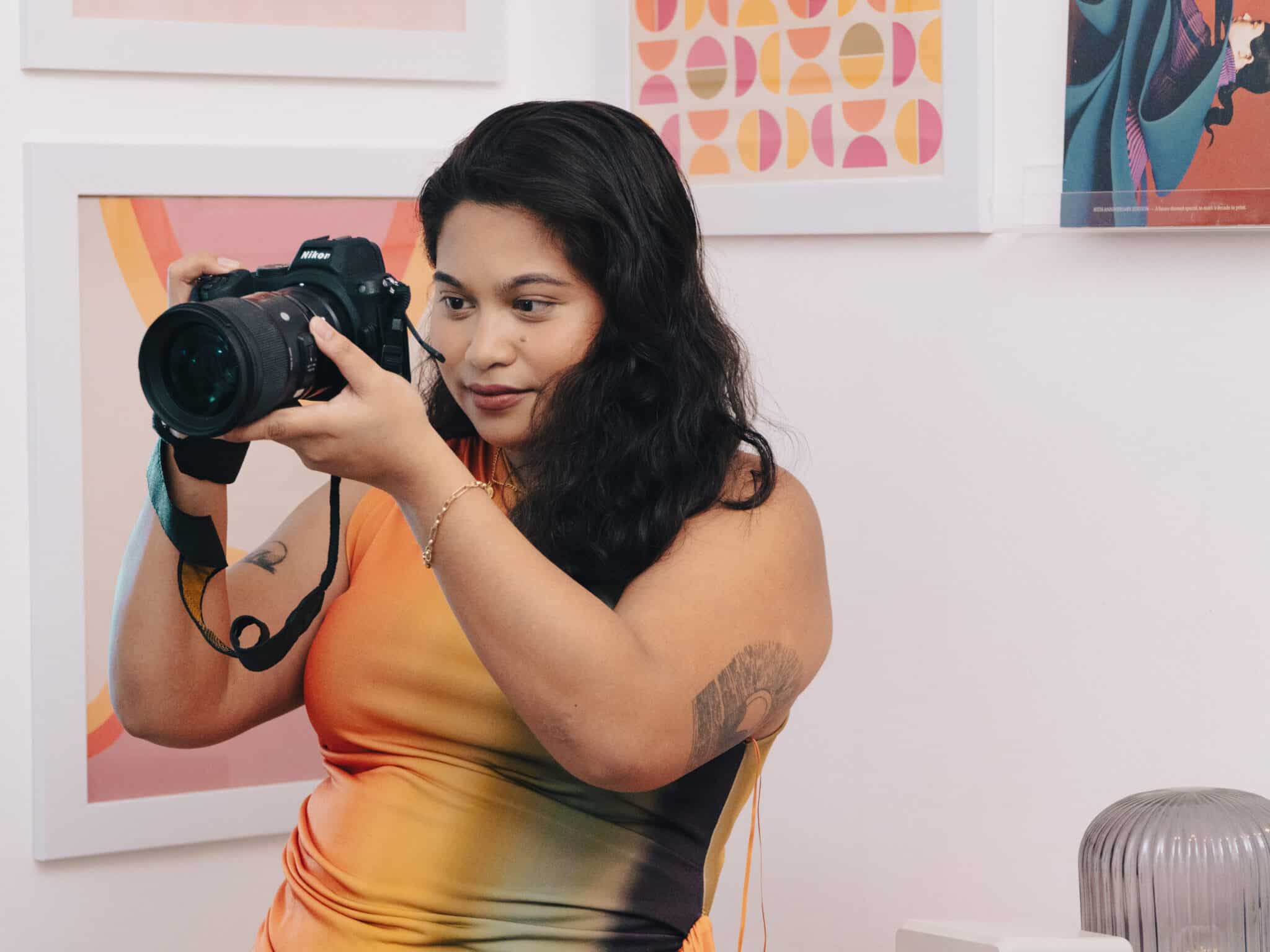
For Geriane, there is a need for more women representation in the creative industry, urging her fellow women photographers to take up and widen spaces for women.
She hopes to inspire the next generation of women by furthering her advocacy of representing women from different backgrounds in her outputs, hoping this may empower many young girls to have the courage to pursue a creative career.
If there is one thing that Geriane would advise to all aspiring photographers, particularly women photographers, it is to always use art in echoing social advocacies and commentaries.
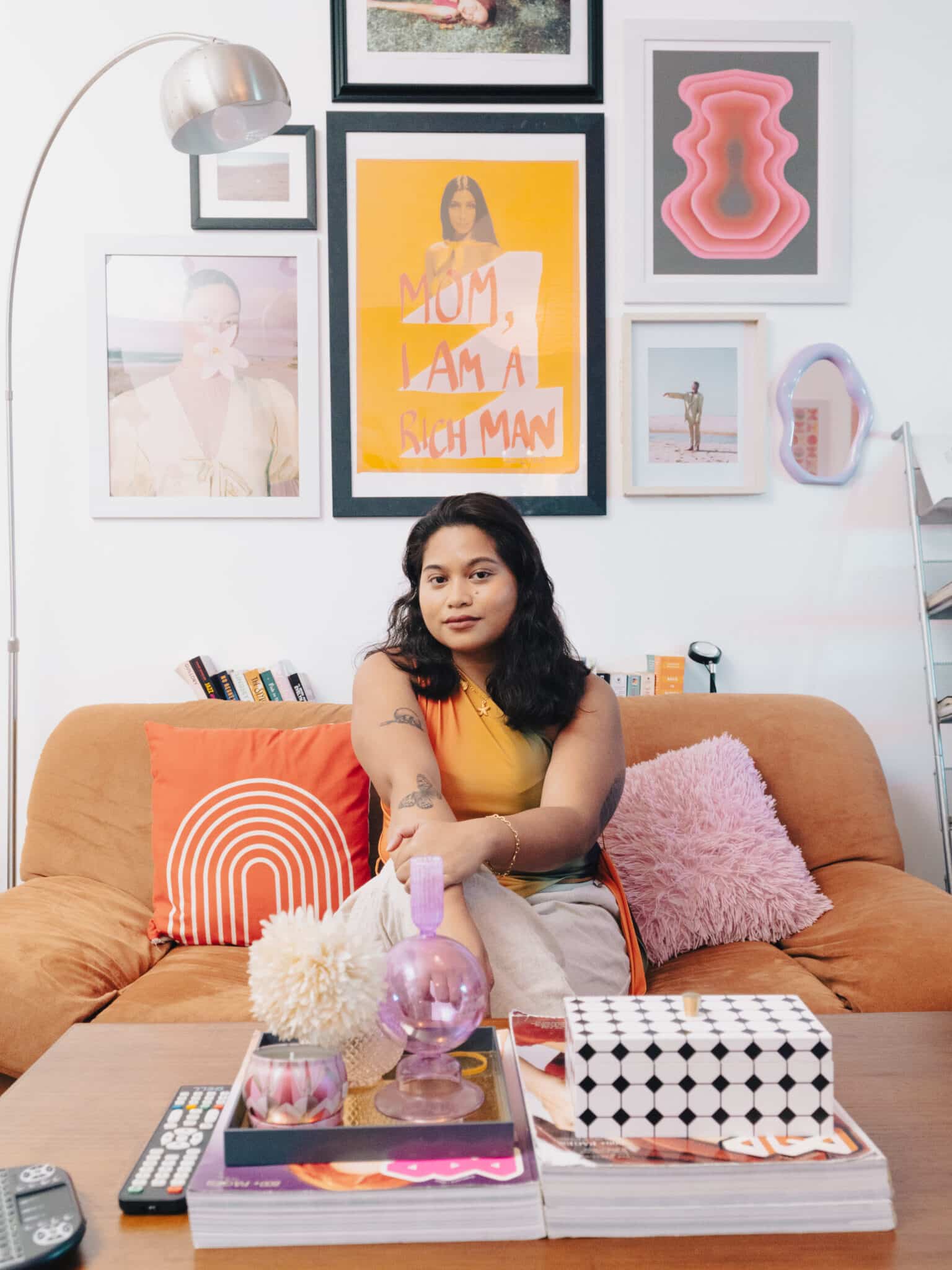
She also mentioned the importance of embracing criticisms for self-growth and improvement.
Geriane recently worked as the official photographer in the September magazine issue of Nylon Manila and the October magazine issue of Republicasia.
She also worked with some of the most influential female celebrities in the country.
When asked what an empowered woman is for her, her answer is as fearless as she is: “An empowered woman is a woman who knows the power she holds—unintimidated by the discomfort or disapproval of others when she wields and upholds it. Most importantly, an empowered woman is a woman who empowers others.”
Igniting self-empowerment through music
Like many aspiring artists, it was a dream come true for 21-year-old singer-songwriter Angela Ken when her self-composed song ‘Ako Naman Muna’ quickly went viral on TikTok.
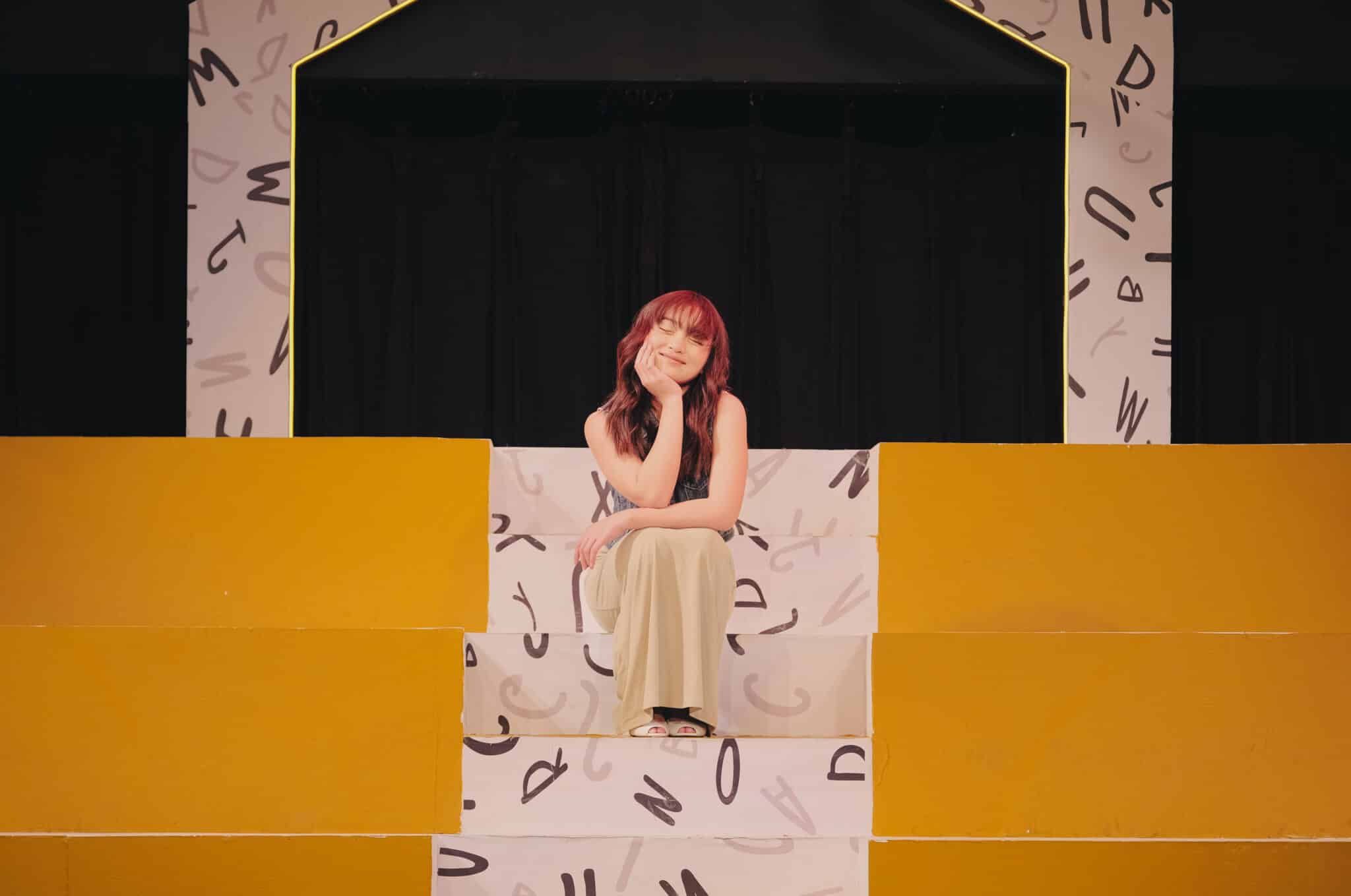
The hit song, tackling self-love amidst the pandemic, touched the hearts of many people. Right after she released the song, she immediately signed with Star Music, a recording label under ABS-CBN Corporation.
This marked the beginning of her career as a musician.
But more than just talking about self-love, Angela has a bigger dream to achieve through her songs—to uplift women in music and inspire the public to embrace themselves.
Born in a family of performers, it was not surprising that Angela was already fond of music at a very young age.
“Sa mother side ko, we really love performing. We really love anything related to art. My cousin plays piano or ballet and siguro ‘yung napunta sa akin e ang pagkanta,” she said.
Angela has been making compositions since she was 12. Her first work was actually a worship song.
“It’s actually just a simple song about God tapos kalaunan parang nagustuhan ko. It’s giving me that comfort na hindi nasasabi ng tao so I tried to put it in a song. Doon ko din na-realize na mahal ko ‘yong pagkanta,” Angela shared.
Although the local music scene has the likes of Regine Velasquez, Sarah Geronimo, Morissette Amon, and KZ Tandingan, the industry seems to have not let go of the patriarchal vestiges.

And Angela, as an emerging singer in the country, was among the many female artists who experienced not being taken seriously for simply being a woman.
“Syempre ‘yung cliche na sinasabi ng iba na ‘babae ka lang eh,’ lagi naman may mga nagsasabi na kasi babae lang ‘yan, ito lang ‘yung kaya niya, hanggang dyan lang siya,” she said.
But instead of getting discouraged, she took these comments as an inspiration to prove to the world that women can also do what a man does.
“Ang sarap kase sa pakiramdam na hindi mo naman sila pini-please pero napapatunayan mo sa kanila na babae ka, hindi babae lang,” she said.
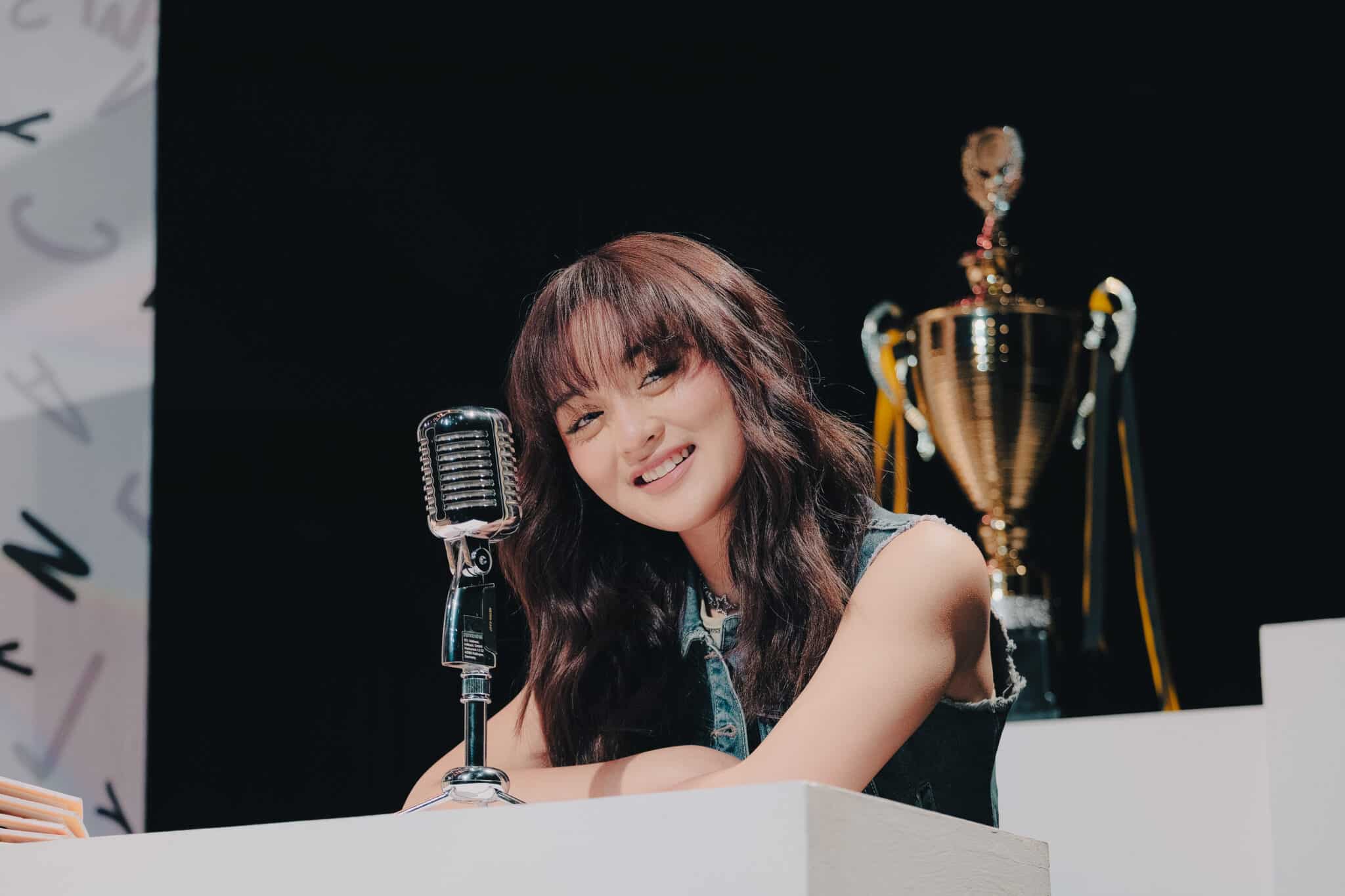
It was also helpful in her journey that she had the best women’s support system—her mom and grandmother, who molded her to be the strong woman that she is.
When asked how important self-love is in the context of women’s empowerment, Angela shared that loving yourself was already an act of empowering other women.
“It’s actually a domino effect na when you love yourself and other women love themselves the way they should, ‘yung positive na kalabasan e lalaki nang lalaki. Makikita ng mundo, makikita ng lahat ng tao kung gaano kaganda and kasaya [maging] babae,” she said.
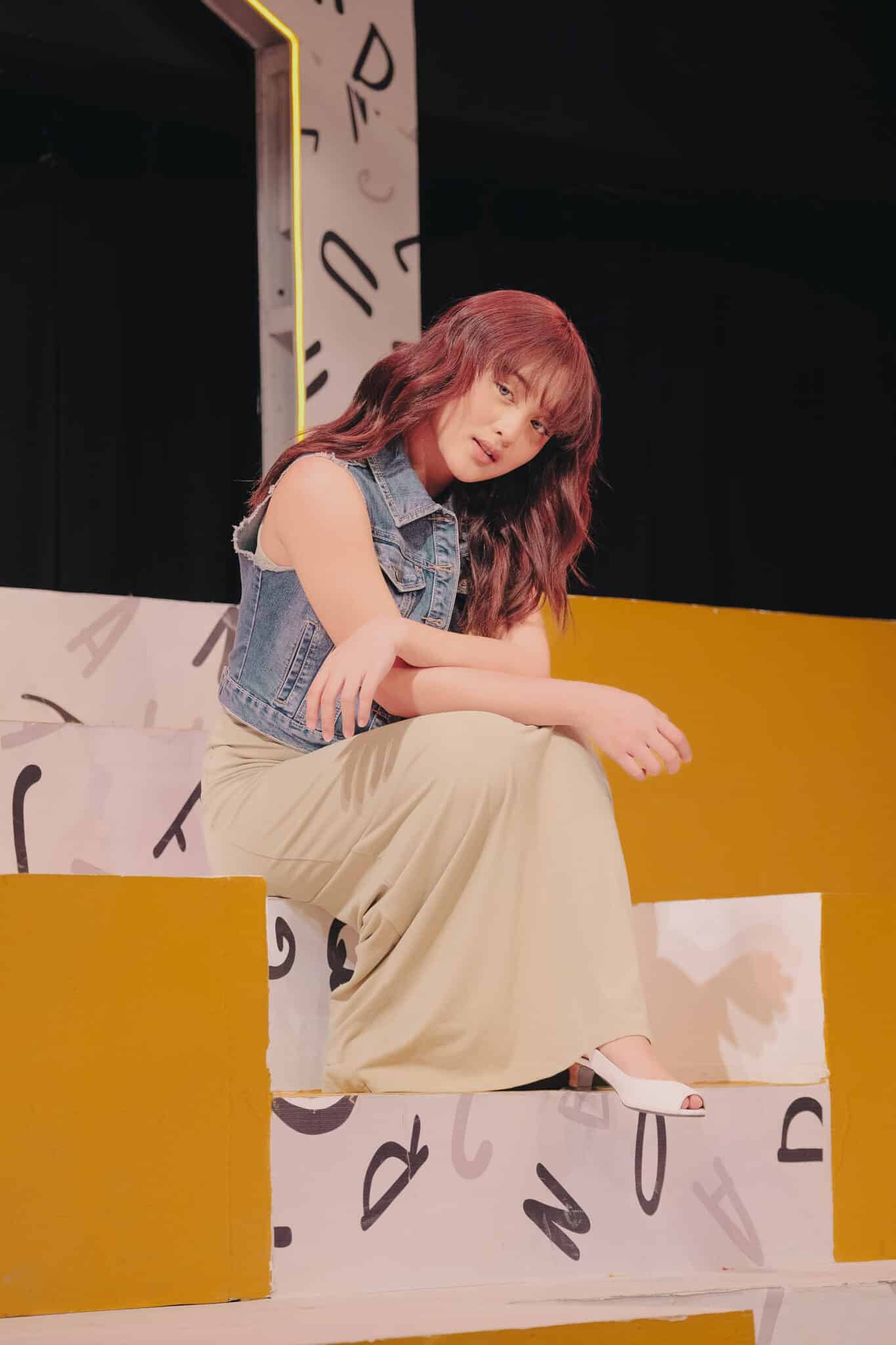
For Ken, an empowered woman is a woman who knows her worth and is confident and genuine to other people.
She hopes to inspire women who also want to pursue a career in singing to never give up on their dreams and be open to criticism.
And her message for all the women musicians in the country is simple yet beautiful—
“Itaas lang natin ‘yung bandera natin. Mahirap oo, madaming magsasabi nang paulit-ulit at walang katapusang ‘babae ka lang,’ [pero] iparinig natin sa kanila, lakasan pa natin ‘yung boses natin na kaya natin, na higit pa sa sobra ‘yung kaya nating ipakita sa mundo.”
Business and content creation through the eye of a woman
Cleo Loque is not the usual content creator and local entrepreneur you see on any social media platform.
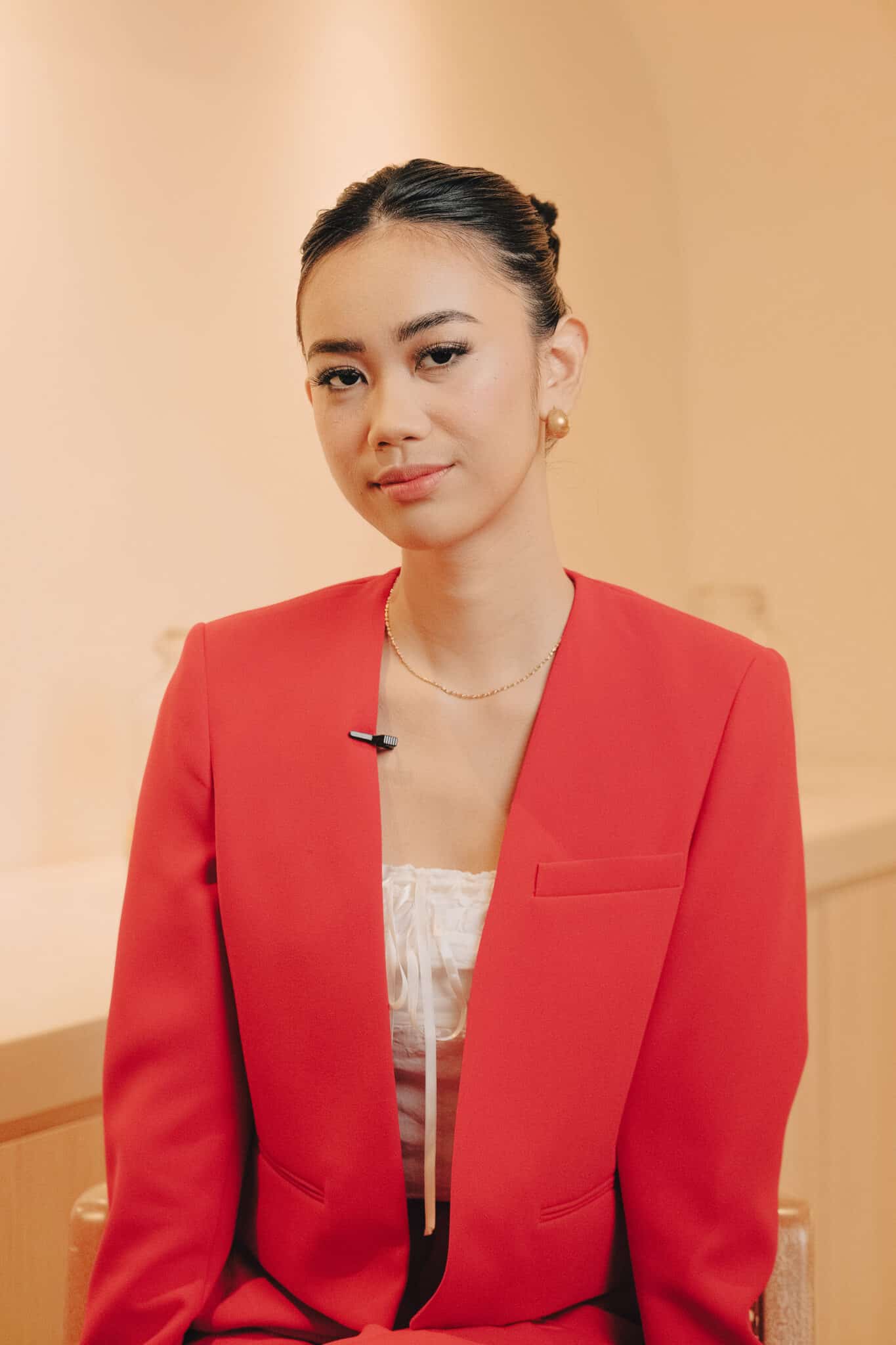
As a woman in business and content creation, she aims to provide a different face of women’s empowerment—through sustainable period care and innerwear products incorporated in her video content.
At the age of 15, she became a young woman CEO in the country with the launch of Hiraya Pilipina in 2019.
“I started Hiraya Pilipina when I was fifteen, so nilalako ko siya sa school ko because I was selling statement t-shirts. I realized that I wanted to be an entrepreneur because I ultimately want the time and freedom… and I think entrepreneurship really provides that for you,” she shared.
The brand was initially selling statement tees and abaca masks before it expanded its product offerings, which include undergarments and nipple pasties, as part of its commitment to empower women of all statuses.
But building your own business as a woman was not something you could do overnight. For Loque, it took her years of doing trial and error to finally carve a name in the business industry.
“This is a recent realization lang that not everyone would believe in you and not everyone wants the best for you. But ako, hindi ko siya masyadong naramdaman just because I’m surrounded by people who believe in our vision,” she shared.
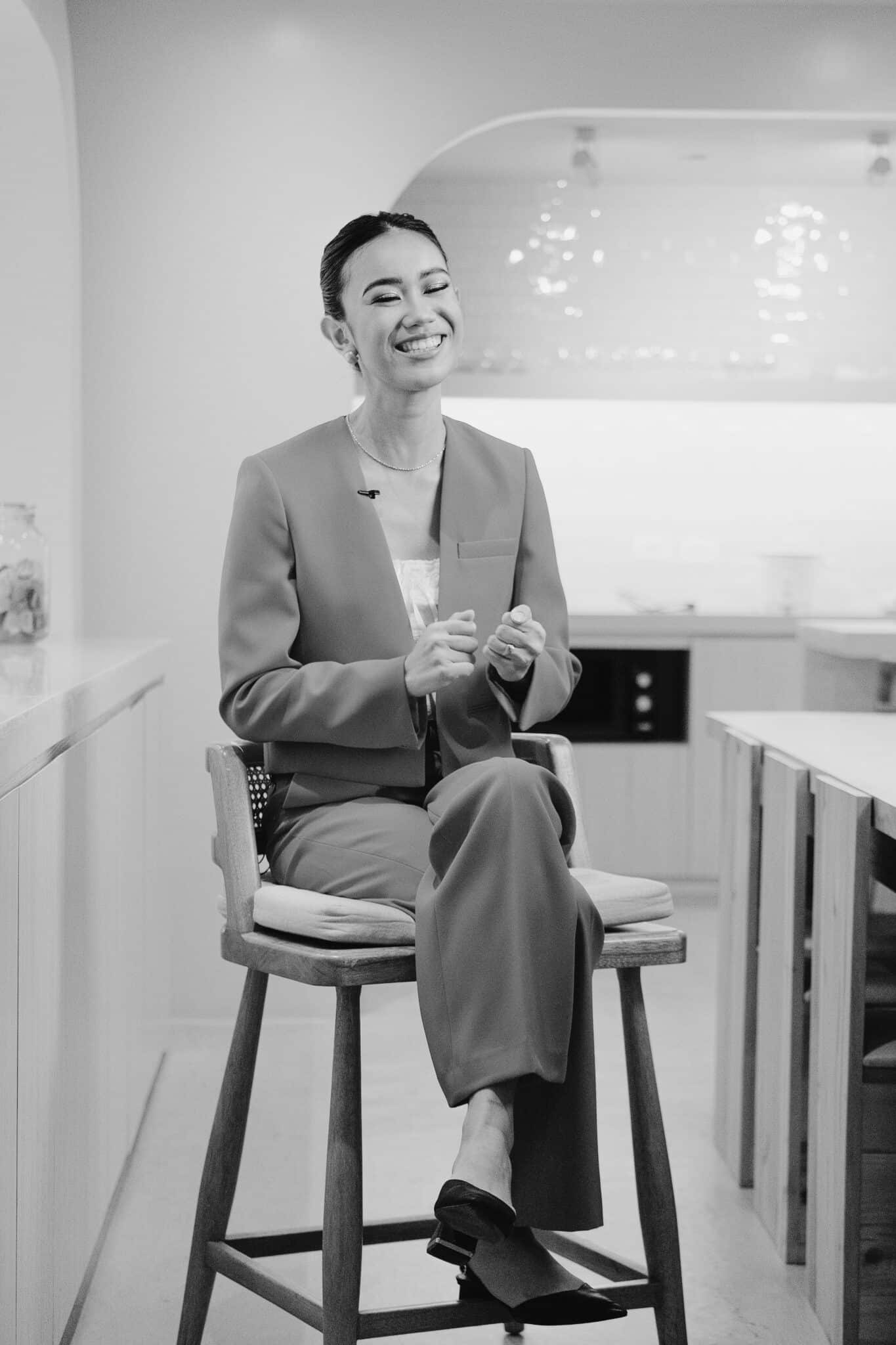
Thanks to her family and friends who believed in her since day one, Hiraya Pilipina is now one of the go-to brands of many Filipino women today.
For Loque, this success would not be possible without the never-ending support of many women she looked up to until now, especially her mother and grandmother.
But if there is one businesswoman who really inspired her to enter the field of business, it was the then-CEO of Happy Skin, Ms. Rissa Mananquil Trillo.
“She co-founded Happy Skin and now, she is a UN Women Ambassador and she really fights for women and girls’ education,” Loque said.
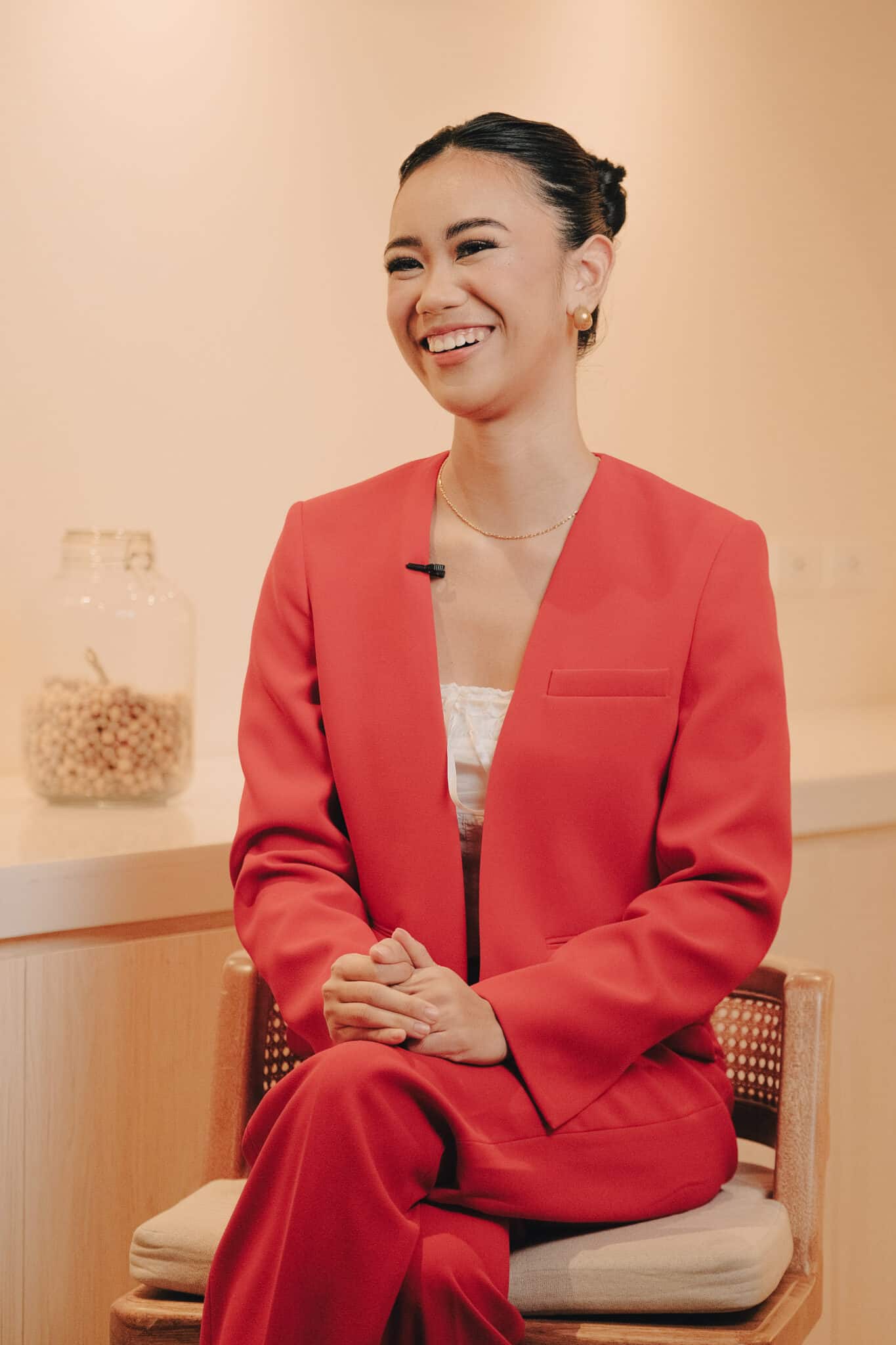
Since she is also good at content creation, Loque has decided to be the main content creator of her brand. She believed that social media could be of big help in sustaining the growth of your business.
“In the modern world, I think pursuing content creation as a business owner is really crucial because your marketing, it’s already free. You can reach so many people for free. I think we should seize this opportunity that we have,” she said.
But what makes Hiraya Pilipina a unique advocacy brand? Loque shared that her business is more than just providing sustainable and better menstrual care products to women. It also serves as a platform for inclusivity.
“Aside from these products, ultimately, I try to use Hiraya Pilipina as a platform for empowerment through our marketing, through showing inclusivity in our models because I think inclusivity does not only stop at your products, but it should show in all aspects of your business,” she said.

As a young CEO and content creator, she hopes to inspire young girls to express themselves better through her products and online content.
She underscored the importance of women’s solidarity among content creators as one way of uplifting women in general.
“My ultimate dream for Filipino women content creators is for us to uplift and empower each other and not bring others down because sometimes, even just a simple comment on TikTok can really devastate you if you are not in the right mental state… Kasi tayo-tayo lang rin naman magtutulungan so hopefully we can inspire and uplift each other,” she reiterated.
An empowered woman, for her, is a woman who is courageous enough to make her own decisions in life because courage, for her, is something you find within yourself.
Cleo Loque is currently taking up an Entrepreneurship course at Enderun Colleges. Despite being a student, CEO, and content creator, she always finds a way to have time for herself and take care of her health.
Visit the Hiraya Pilipina site for sustainable and better period care products that all women deserve to have.
Fashion as a form of self-expression and embracing body positivity
It is believed that Filipino culture is often connected with the art of maximalism.
From the traditional garments they wear to the pieces of furniture in a Filipino household, maximalist design can be easily observed.
Yana Kalaw, one of the emerging fashion designers in the country, aims to promote the beauty of maximalism in her quirky collections in hopes of inspiring women to embrace their bodies.
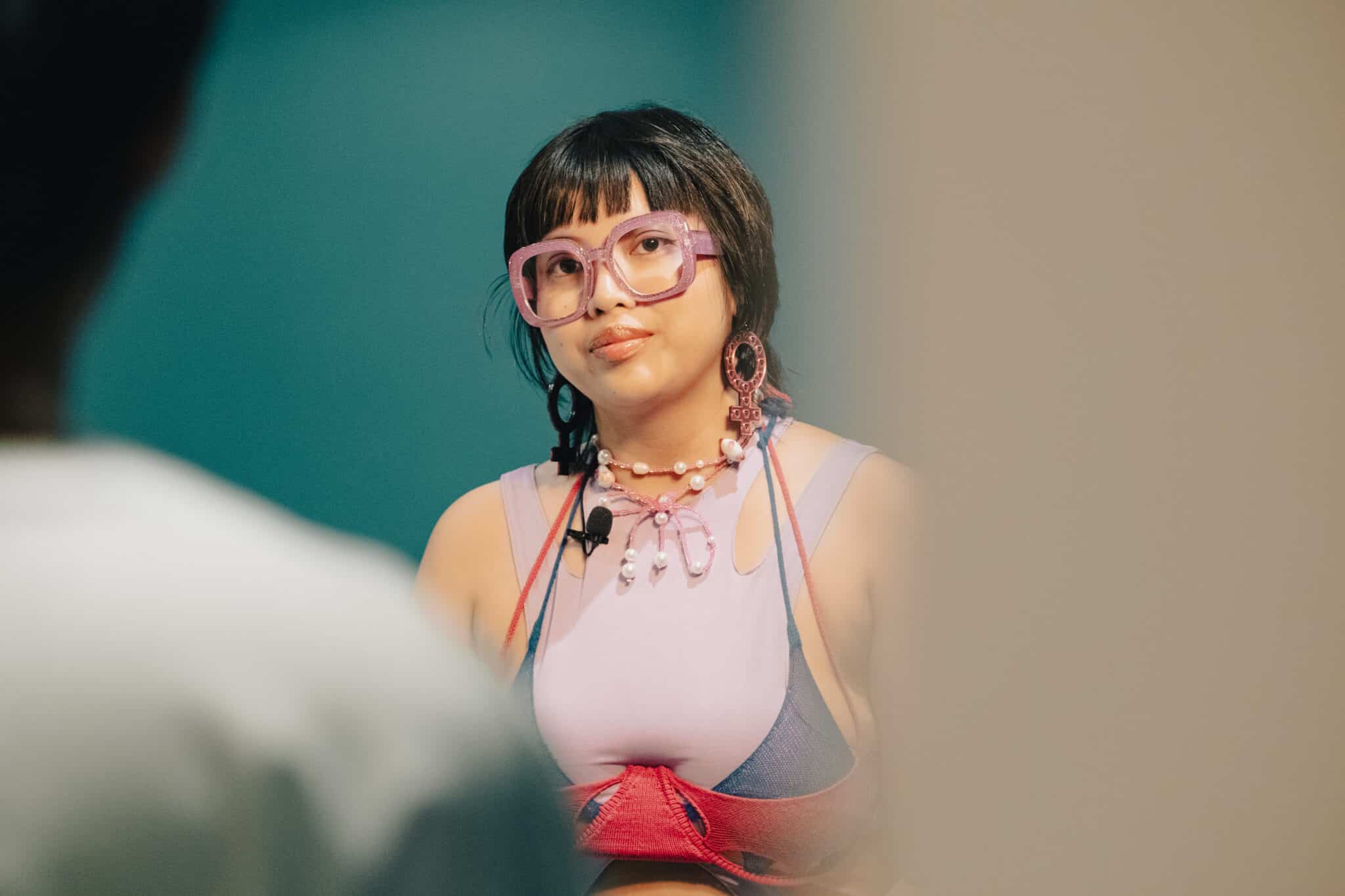
Kalaw started to be interested in fashion when she was a kid.
“Noong bata ako, actually very creative [na] kasi ako e. Since ‘yung lolo ko e architect so gusto [ko] na talaga na nagke-create. I like being dressed up and all that so may interes na talaga even at such a young age. So parang doon lang nag-start ‘yung love ko for fashion talaga,” she shared.
This interest would further deepen because of many women in her life who believed in her skills. Her mother, for instance, would encourage her to wear colorful outfits at a very young age, which would later have an impact on her maximalist motifs.
Many of her teachers in college were also supportive of her fashion journey, giving her the necessary boost to never let go of her dream to be a fashion designer.
In fact, having a strong support system from women helped her to overcome her struggle of doubting herself and her talents. That is why she also wants to help other women in overcoming their struggle with their body insecurities.
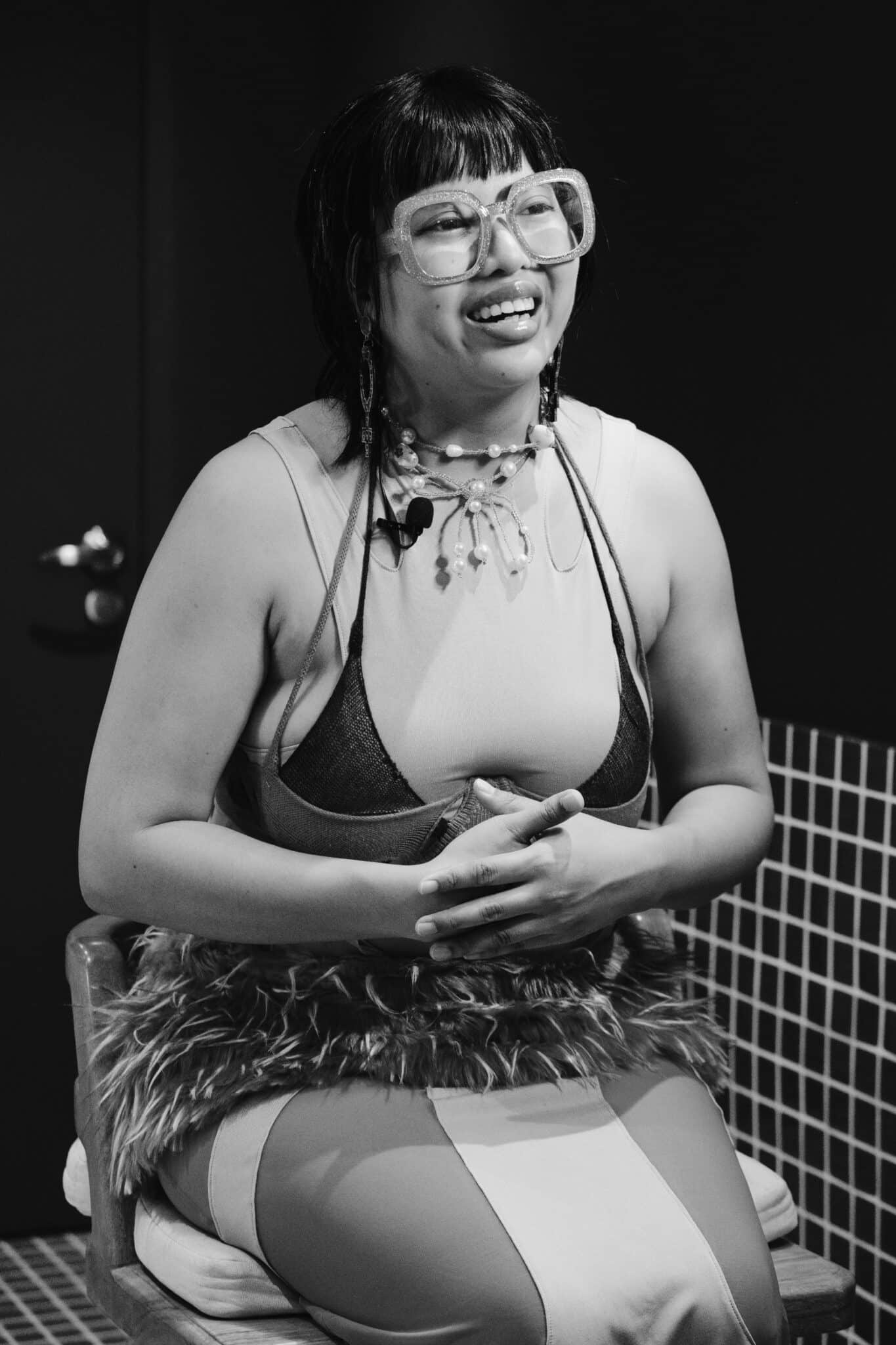
As a fashion designer, she has been an advocate of experimental fashion for all. She wanted people to go out of their comfort zone and just have fun with what they wear.
“Ang daming tao na super nasha-shy with ‘yung body nila… but it’s just that I really want to push them and see na, “your body is beautiful, show it off!”, like body positive talaga,” Kalaw shared.
She aims to create a community where women support each other and are comfortable with their bodies through her fashion outputs.

Kalaw is famous for her fur pieces, reinventing the trajectory of fashion with her unique manipulation techniques in colors and textures. Her goal is to showcase the inner femininity of women and the beauty of a woman’s body in a maximalist way.
However, using fur in collections remains to be a hotly debated topic in the fashion industry due to its sustainability issues. Yet Kalaw ensures that ethical considerations are always incorporated into her works.
“So what I’m using naman kasi right now is faux fur so hindi siya animal cruelty at all. Tapos ‘yung mga furs ko actually, I keep all the retasos. Even the slightest na mga fur, I try keeping it kasi I have other projects I plan for that. But ethicality is really giving importance to the fabric, not wasting it [and] just using the fabric to its fullest extent,” she shared.

For Kalaw, an empowered woman is someone who lifts other women.
“Hindi siya nagseselos, hindi siya yung parang ‘bakit siya merong ganito? Bakit ako wala?’ Like walang away, walang anything, it’s just really “Oh My God, go girl!” ‘yung mga ganoon. Parang very supportive lang,” she said.
She urged her fellow women designers to support each other and uplift their community in the industry.
If there is one piece of advice she would give to all aspiring fashion designers in the country, it is to never give up and lose hope.
It may seem cliché for many but it is what keeps her pushing in a highly competitive industry that is fashion.
Yana K. Studios, her own label, is a brand that creates maximalist collections for all. Her fur pieces were recently featured in the 2024 January cover issue of Preview Magazine.
Managing Editor: Henrick Chiu
Creative Head: Sven Gaffud
Executive Producers: Danica Rae Ulanday & Yan Bernardino
Graphic Artist: Jadelyn Isiderio
Photographer: John Gabriel San Luis
Videographers: Joshua Ramos & Sean Rencel Guan
Video Editors: John Gabriel San Luis, Joshua Ramos, & John Lester Calulo
Writer: Joshua Gerona
Production Staff
Glycel Galpo
Zyrish Quierrez
Sharmine Lolong
Mariallie Jane Mazon
Ana Millicent Lim

